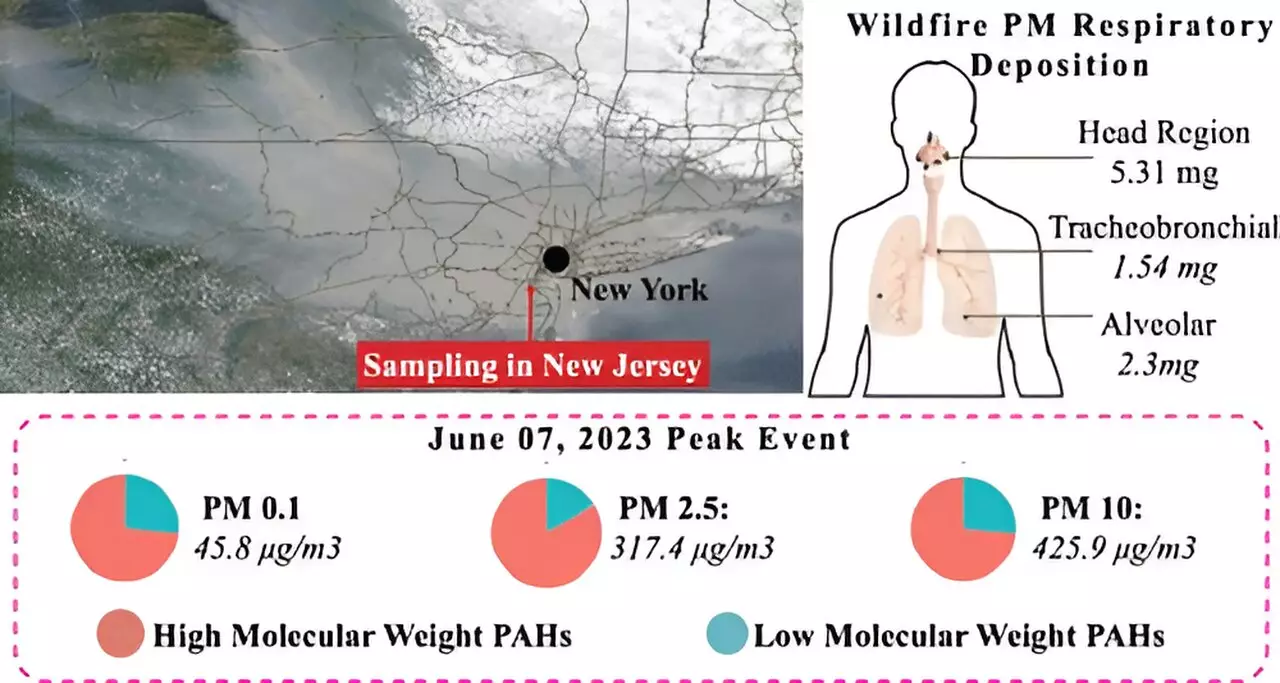The frequency and intensity of wildfires have surged in recent years, a trend that appears to be linked to climate change and its adverse effects on weather patterns. A June 2023 fire event notably raised alarms, issuing advisories to over 100 million people across the Northeast United States, including New Jersey and New York City. As the world grapples with the ramifications of climate change, understanding the interplay between wildfires and public health is becoming increasingly critical. Recent findings from Rutgers University researchers shed light on the concerning characteristics of wildfire-generated particulate matter (PM), highlights the affirmative need for more aggressive public health policies and air quality management strategies.
Conducted by a team from Rutgers School of Public Health, this groundbreaking study looked into the complex physical and chemical makeup of particulate matter resulting from this climate-induced wildfire. Published in the journal *Environmental Science & Technology*, the research notably marks the first examination of its kind in a region that lacks comprehensive previous data. Lead investigator José Guillermo “Memo” Cedeño Laurent emphasized the detrimental role that wildfires have had on air quality, explaining that such fires reverse hard-earned gains made in air quality over the past several decades. The research underscores how wildfire smoke, which contains a cocktail of harmful substances, significantly deteriorates public health.
One of the striking findings was the astonishing concentration of harmful polycyclic aromatic hydrocarbons (PAHs)—substances recognized for their carcinogenic properties—unleashed during the fire’s peak on June 7. The investigation revealed particulate matter levels soaring nearly tenfold above national air quality standards, creating an alarming public health risk unseen in over fifty years of monitoring.
Emerging evidence raises serious concerns regarding the health impacts of wildfire smoke. Epidemiological studies have started establishing connections between such smoke and increases in respiratory and cardiovascular emergencies in urban settings like New York City. Despite these findings, knowledge about the underlying mechanisms of these health implications remains limited.
The results of the Rutgers study amplify calls for further research on how finely dispersed airborne particles function in terms of human health. While conventional pollution sources have been a subject of extensive investigation, climate-driven wildfires necessitate a deeper understanding due to their unique chemical properties and larger volume of toxic particles released into the atmosphere.
The study provided significant insights into the nature of particulate matter produced during wildfires. It discovered extraordinarily high concentrations of ultrafine and fine particles, capable of penetrating deep lung tissues. What’s alarming is that these tiny particles can evade the body’s natural defense systems, leading to adverse health effects.
According to Demokritou, another prominent researcher involved in the study, these microscopic particles not only compromise lung function but may also initiate inflammatory responses that can affect cardiovascular health. As the research indicates, more than 9 micrograms of particles can settle in the lungs during just 72 hours of exposure, further emphasizing the urgent need for monitoring and mitigating approaches.
The revelations from this study hold serious implications for public health assessments and policy-making in the face of climate change and wildfires. Armed with data illustrating the specific threats posed by wildfire-derived air pollution, public health officials can better evaluate risks for vulnerable communities, especially those already facing challenges related to air quality.
Cedeño Laurent and Demokritou advocate for using this newfound knowledge to enhance community preparedness and inform public health strategies. This could mean implementing stricter air quality standards, developing community awareness campaigns, or enhancing healthcare infrastructure to deal with smoke-related health crises as these wildfire events become more commonplace.
Looking ahead, the implications of the study extend beyond immediate assessments of air quality. Future research will be essential in dissecting the long-term health outcomes associated with exposure to wildfire smoke. Investigations into the effects on various organ systems are underway, involving collaborations across multiple institutions.
Moreover, this research highlights the importance of interdisciplinary work in untangling the complexities of air pollution. Understanding the optical properties and broader climatic effects of particulate matter from wildfires could yield valuable insights in the fight against climate change and its ongoing impacts on densely populated urban centers.
As climate change continues to evolve, so too will the challenges posed by wildfires and their impact on air quality and public health. The Rutgers researchers’ findings lay a crucial framework for understanding these risks, emphasizing the pressing need to develop proactive strategies. Collectively, we must work towards an integrated approach to environmental health, prioritizing both research and community resilience to navigate these consuming challenges effectively.

